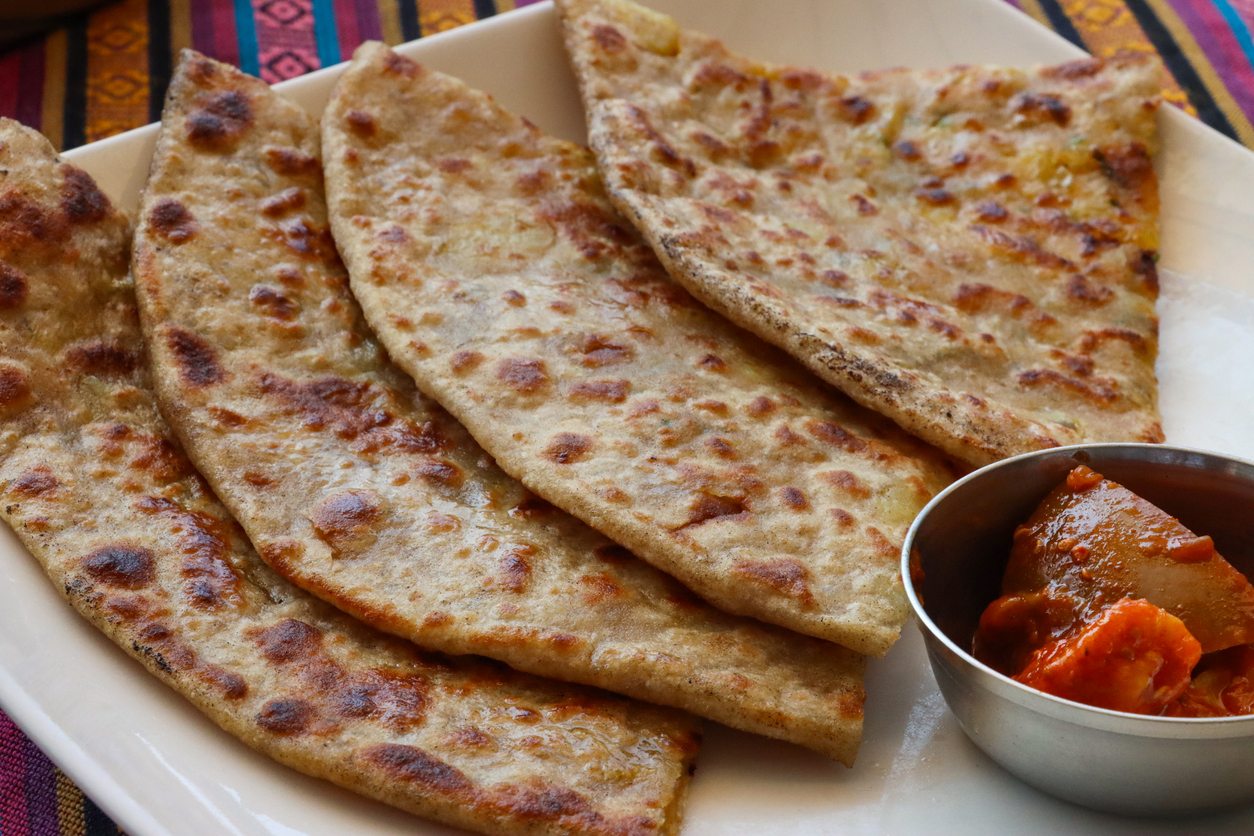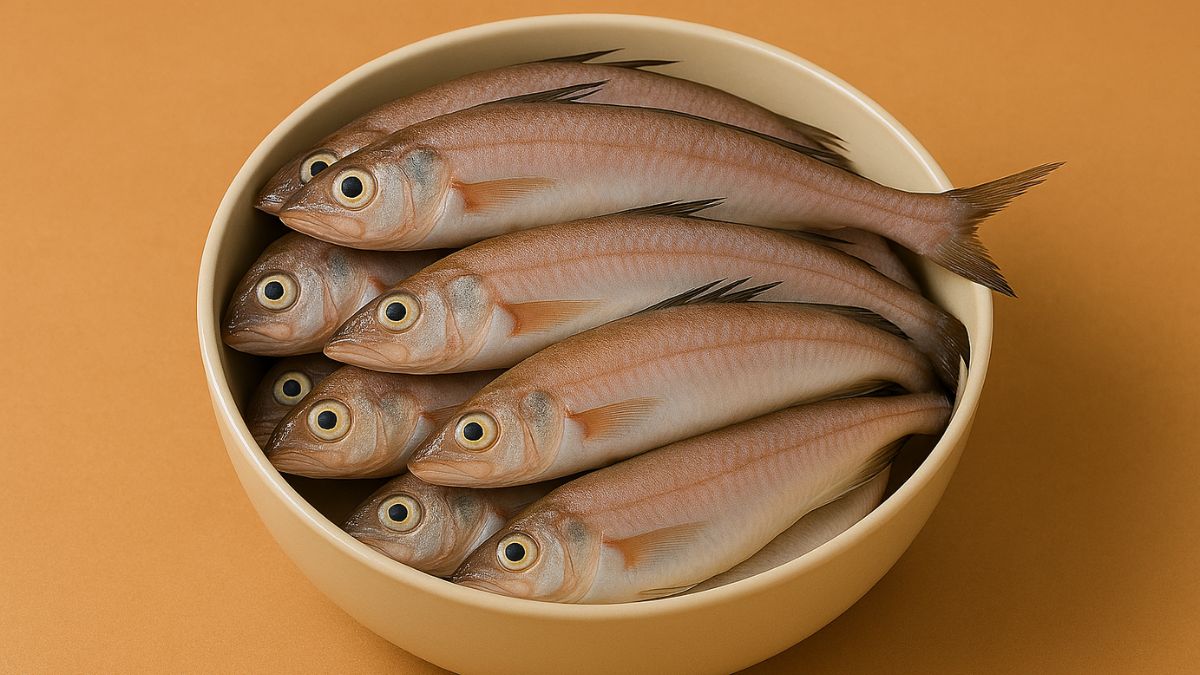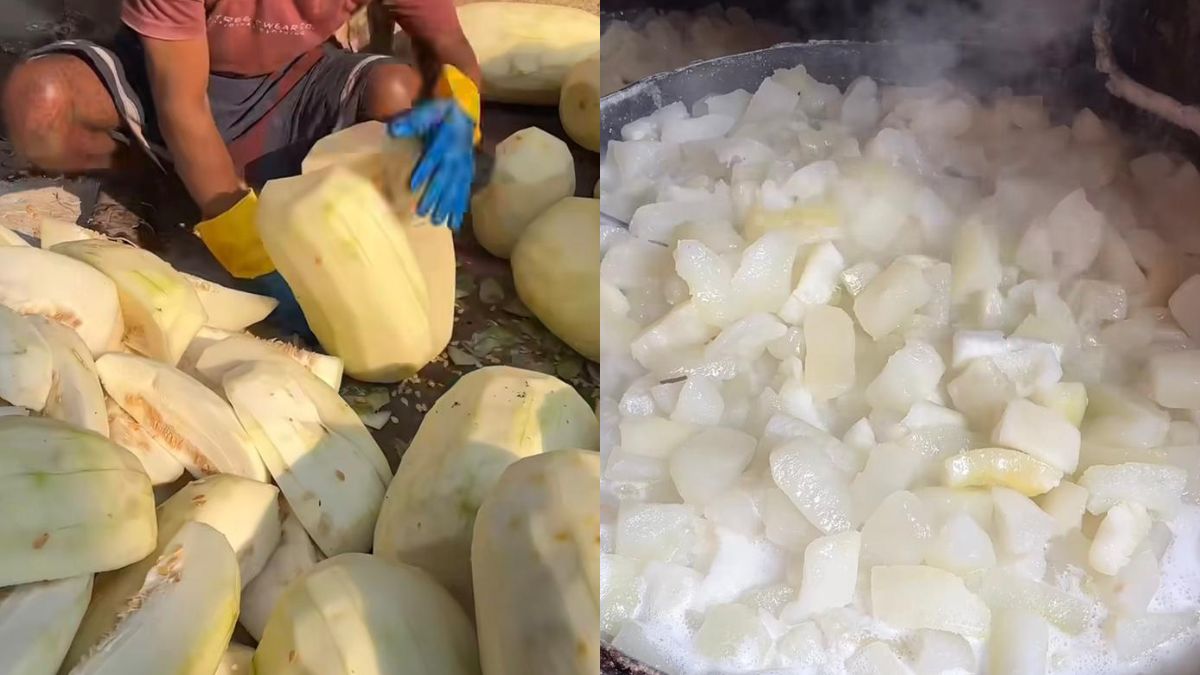The bliss of biting into a crispy, golden samosa straight out of the kadhai is unbeatable. The flaky crust, the spicy potato filling, the combination of flavours in every bite, it is a snack that defines street food like no other. But making it at home can feel like a MasterChef-level task. Either the outer layering is too thick, the samosas absorb too much oil, or worse, they burst open while frying. This is why getting each step right is so important. Sure, your food delivery app will happily send over piping hot samosas in minutes, but if you want to ace them in your own kitchen, here are some tips to help you make street-style samosas at home.
Also Read:Veg Samosa, Paneer Samosa And More: 7 Veg Samosa Snack Recipes For Your Evening Tea Time
Where Did Samosa Come From? Is It Even Indian?

A samosa is a popular snack consisting of a crispy, golden-brown pastry shell filled with spiced potatoes, peas, and onions. The filling is savoury and full of flavour, with a blend of aromatic spices. Samosas can be fried or baked and are often served with chutneys or sauces. They are a treat that works equally well as an evening snack or a quick bite on the go.
But is the samosa truly Indian? Here are some interesting facts:
Born in the Middle East: The samosa traces its roots to the Middle East and Central Asia, where it was initially called “sambusak” or “sanbusak.” Traders brought it to India around the 13th or 14th century.
Indian Twist: Once it arrived, the recipe evolved. North Indian samosas typically feature spiced potatoes, peas, and onions, whereas other regions have experimented with lentils, nuts, or meat.
Everywhere You Look: Today, samosas are found on every street corner, at festivals, and family gatherings across India.
Global Snack Star: From London to Singapore, samosas are recognised as an iconic Indian snack, often paired with chutneys that combine sweet, tangy, and spicy flavours.
How To Make Samosa At Home | Easy Samosa Recipe
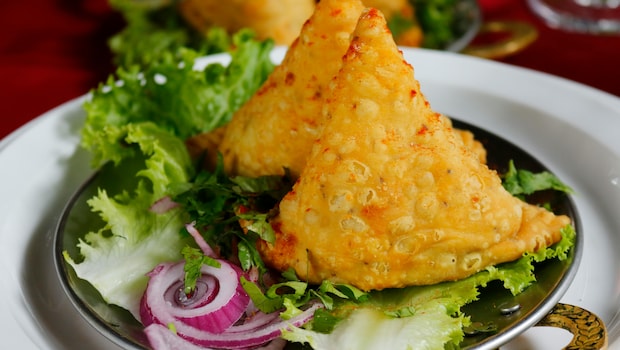
Photo: Pexels
Ingredients For Samosa Dough And Filling
For the dough:
2 cups all-purpose flour
1 teaspoon salt
1/4 teaspoon baking powder
1/4 cup ghee or oil
1/2 cup lukewarm water
For the filling:
2 large potatoes, boiled and mashed
1 cup peas
1 onion, finely chopped
1 teaspoon cumin seeds
1 teaspoon coriander powder
1/2 teaspoon garam masala
Salt, to taste
2 tablespoons lemon juice
Chopped coriander leaves, for garnish
Steps To Make Samosas At Home
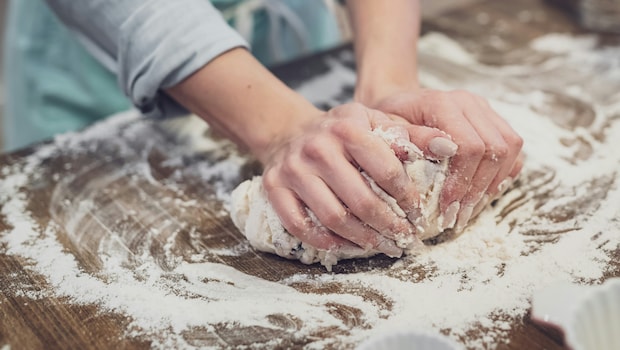
Photo: Unsplash
1. Make the dough: Combine flour, salt, and baking powder in a bowl. Knead the dough for 5-7 minutes until smooth.
2. Prepare the filling: Saute cumin seeds, onion, and peas in oil. Mix with mashed potatoes and spices.
3. Roll out the dough: Divide into small balls and roll each into a thin circle. Cut the circle in half.
4. Fill and shape the samosa: Place a spoonful of filling on one half of the dough, fold, and press the edges to seal.
5. Fry the samosas: Heat oil in a deep pan and fry until golden brown and crispy.
For a step-by-step recipe to make crispy samosas at home, click here.
5 Tips To Make Street-Style Crispy Samosas At Home
1. Knead A Stiff Dough
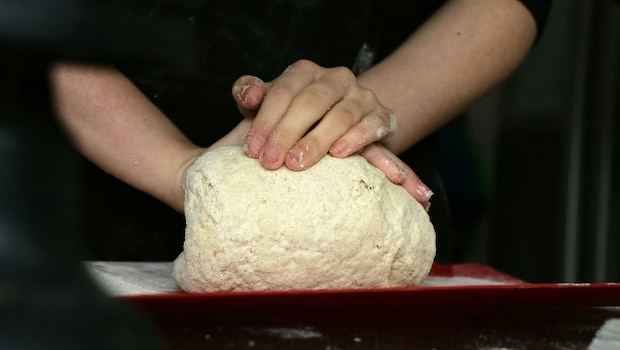
Photo: Unsplash
The backbone of a good samosa lies in its crispy outer coating, and the secret to achieving that is in the dough. Unlike chapati dough, samosa dough should be tight and slightly hard, never soft. Add a little ghee or oil while kneading to get that crunch when fried. The ghee helps bind the dough and gives it a rich flavour. Let it rest for at least 30 minutes before shaping the samosas.
2. Roll Evenly But Not Too Thin
If the covering is too thin, it will crack, while a thick one turns chewy. Aim for medium thickness when rolling the base. This ensures it holds the filling and still fries to a crisp, golden finish. The balance between thickness and thinness is what gives the samosa its street-style texture.
3. Seal With Water-Flour Paste
There is nothing worse than samosas opening in hot oil. Always seal the edges with a water-flour paste, which acts like natural glue. Press firmly so there are no gaps where oil can seep in. This helps the samosas keep their shape and stops them from turning greasy.
4. Fry On Low Heat First
Patience is key. Begin frying on low heat so the samosa cooks evenly. Raise the flame towards the end for that golden crunch. Frying entirely on high heat will brown the outside while leaving the inside raw.
5. Avoid Overstuffing
It may be tempting to pack in extra masala aloo, but overfilling makes the samosa burst open while frying. Stick to one or two tablespoons of filling. This helps the pastry hold its shape and fry evenly.
Making samosas at home takes practice, but with these tips, you will get closer to that street-style perfection. If your first few attempts are not flawless, do not worry. You can always order them from your favourite food delivery app and keep practising until your version is just right.
Common Samosa Mistakes And How To Avoid Them
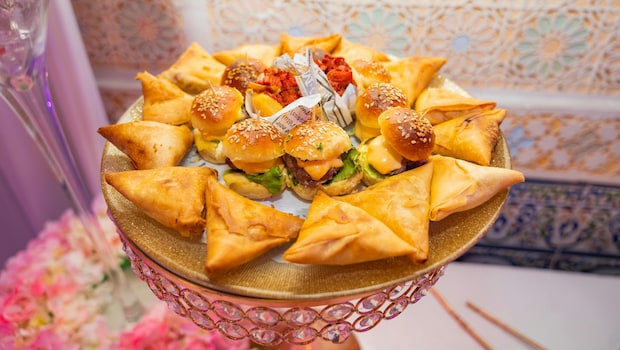
Photo: Pexels
Even experienced cooks can run into problems when making samosas. Understanding why certain issues happen can help you perfect this street-style snack at home.
1. Soggy Crust
If your homemade samosa ends up with a soggy crust, it usually means that the oil was not hot enough or that the dough was too soft. Ensure the oil is at the right temperature before frying and that the dough is kneaded firmly and rested properly.
2. Bursting While Frying
A samosa that bursts during frying is often either overstuffed or not sealed correctly. Using just the right amount of filling and sealing the edges tightly with water-flour paste prevents the contents from escaping.
3. Too Oily
Cooking entirely on very low heat can cause samosas to absorb excess oil. This not only affects the texture but may also upset the digestive system later. Fry on medium to low heat first, then slightly increase the flame to achieve the golden crunch.
4. Not Crispy Enough
If your samosas are not as crispy as you hoped, it could be due to insufficient ghee in the dough or rolling the pastry too thickly. Adding ghee while kneading and maintaining medium thickness while rolling ensures a perfectly crisp outer layer while keeping the filling soft.
How To Reheat Samosas At Home
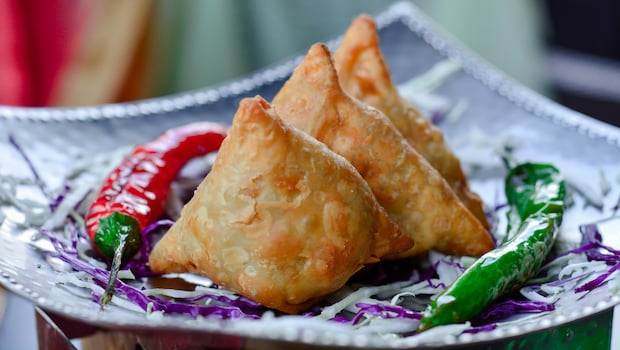
Photo: Pexels
If you want to reheat samosas, use an oven or an air fryer. Avoid microwaves, as they make the crust limp. Reheat at 180°C for 5-7 minutes. This brings back the crunch as if they were freshly fried.
Can You Bake Samosas Instead Of Frying?
Yes. Brush them with oil and bake at 200°C until golden. They may not be as crispy as the fried version but are still delicious and a lighter alternative.
Best Oil For Frying Samosas
Refined sunflower or vegetable oil is ideal as they have a neutral flavour and a high smoke point. You can also use whichever oil you normally prefer for deep frying.
How Long Do Samosas Stay Fresh?
Freshly fried samosas remain crisp for 4-5 hours. Refrigerated ones last 2-3 days, but should be reheated in an oven or air fryer if you want them crunchy again.
Nutritional Value Of Samosas
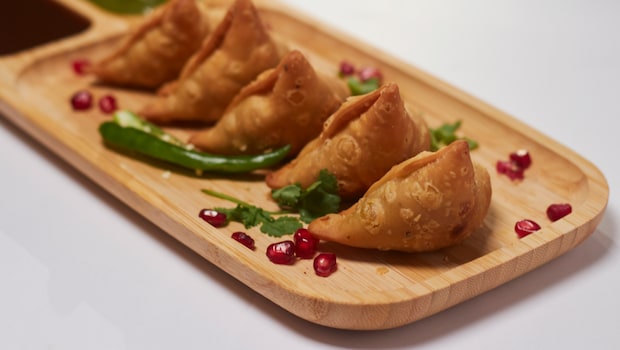
Photo: Unsplash
A typical fried samosa contains around 120-150 calories, depending on size and filling. Potatoes, peas, and spices provide fibre and some protein, but fried samosas are high in fat, so moderation is advised. For a lighter version, you can bake samosas or reduce the amount of oil used while frying. This subsection is particularly useful for health-conscious readers who still want to enjoy this classic snack.
Different Types Of Samosas
Samosas are not limited to the classic potato and pea filling. Variations are widely popular across India and beyond.
Chicken or lamb samosas: A heartier, non-vegetarian version.
Paneer or cheese samosas: Rich and creamy, perfect for a fusion twist.
Sweet samosas with coconut or khoya: Ideal for dessert or festive occasions.
These variations can also inspire readers to try different fillings at home, making the recipe more versatile and engaging. So, next time you are making samosas at home, keep these tips, nutritional insights, and variations in mind to achieve the perfect street-style crunch.
About Nikita NikhilMeet Nikita, a passionate soul with an insatiable love for two things in life: Bollywood and food! When she's not indulging in binge-watching sessions, Nikita can be found behind the lens capturing moments or expressing her creativity through painting.
